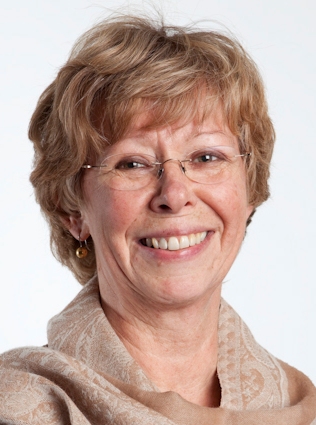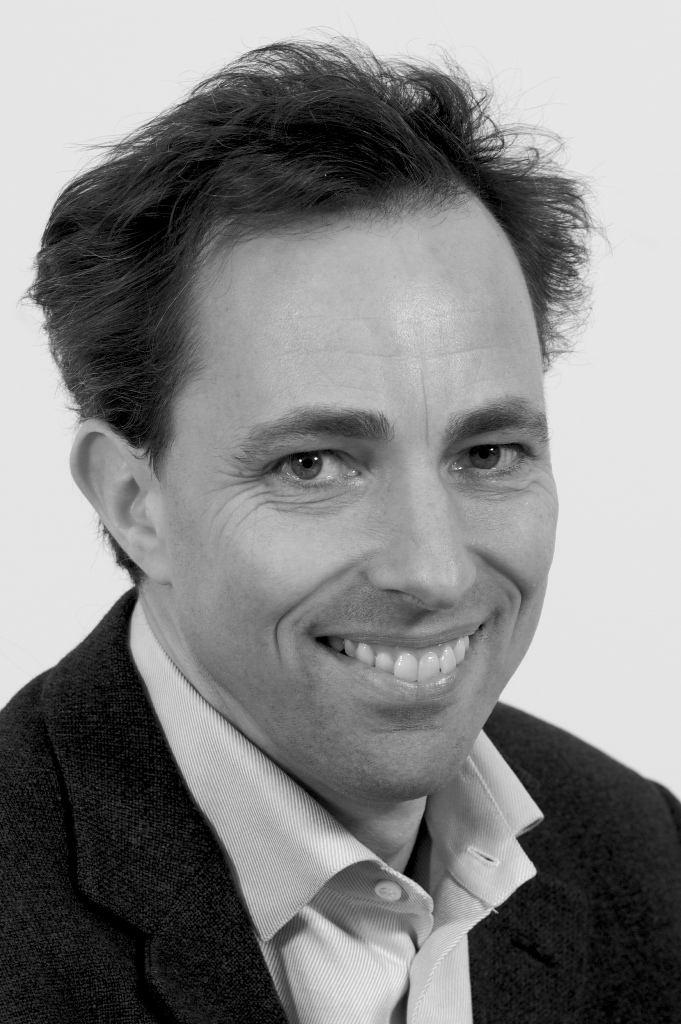No earmarking for new centres
Earmarked funding for gender equality measures will no longer be available when the new Centres of Excellence are established.

The criticism came fast and furious when the Centres of Excellence (SFF) scheme was created 10 years ago and the first 13 centres were established two years later. All of the 13 centres were directed by men, and there was a clear majority of men at lower position levels as well. The scheme was criticized for intensifying the gender divide in academia.
When the process of establishing new centres began in 2005, steps were taken to improve the gender balance. In the call for proposals issued in spring 2005, applicants were asked to give consideration to gender in their projects.
“We realized it was necessary to do something to focus more on gender equality,” says Gro E.M. Helgesen, Special Adviser at the Research Council of Norway who is the coordinator for the SFF scheme. She points out that three measures to improve the gender balance were implemented in the second funding round:
- The institutions were encouraged to propose women as centre directors and upper-level researchers.
- The applications for SFF status were to include plans for gender equality and targets for the percentage of women among the researchers and doctoral and post-doctoral research fellows at the centres. It was also made clear that the targets could have consequences, as they would be one of the factors taken into account when the centres underwent midterm evaluations.
- As a third measure, part of the centres’ budget would be earmarked for gender equality measures. NOK 3 million per year of the total budget framework for the new centres was set aside.
Over a five year period, a total of NOK 15 million in allocations was earmarked, which the centres could apply for and use on specific gender equality measures. The funding has been a key component of the efforts to improve the gender balance.
But now it is over.
For the new centres planned to be established in 2012, earmarked funding for gender equality measures will not be available.
“We have just issued an announcement for SFF funding again, and we have not included this special measure because we believe the institutions have come much further in taking gender equality into account and can incorporate it into their own projects,” says Helgesen.
“After all, it’s a question of where we should direct our energies,” she adds.
Eight centres continued
All the SFF centres are established for an initial five-year period. Whether a centre is funded for two periods depends on the midterm evaluation conducted after three and a half years. For all eight centres granted funding in 2007, the evaluation concluded that they should be continued for another five years.
So how well did their activities to improve the gender balance work?
According to Helgesen, as part of the midterm evaluations the eight centres were assessed on how they followed up their gender equality efforts. The centres were asked to document what they had done in the area, and this was included in the overall assessment when the Research Council decided whether the centres should be continued.
“The evaluation committee was satisfied with the centres’ work to strengthen gender equality,” says Helgesen.
“What does that mean?”
“The committee said it thought that all the centres had managed to place the gender equality issue on the agenda, and had done what they could in this regard,” says Helgesen. The evaluation encompassed both the plans the centres had presented in their original applications and the measures that had received special funding.
On the question of how the issue has been placed on the agenda, Helgesen says that there are different challenges in the various research communities and much of it has to do with the working environment and leadership.
“And it as to do with establishing a framework for recruiting women to research and for helping women to obtain qualifications as project managers,” says Helgesen.
Earmarked funding
The earmarked funding for gender equality measures has been a crucial part of these efforts. The allocations comprised NOK 3 of the NOK 80 million annually for the eight centres established in 2007. Helgesen says that all eight centres applied for this funding and that the NOK 15 million earmarked in the first five-year period has been awarded. The size of the allocations has varied depending on the projects.
“In relation to these special allocations, we have emphasized that they should be tied to the gender equality efforts at the host institutions. This was a way of supporting the institutions’ own activities in this area,” says Helgesen.
According to Helgesen, the funding has been granted for a variety of purposes.
“For some centres it has been important to extend their post-doctoral research fellowships, while for others it has been important to recruit female researchers from abroad so the centres could have role models in place,” says Helgesen. “Some applied for funding to recruit women to adjunct professor positions, while others applied for funding for participation in leadership training and seminars focusing on how to improve the gender balance.”
“I think it has basically worked as well as it could,” responds Helgesen to the question of whether she believes overall that the measures to improve the gender balance have worked.
Dropped the excuses
The Center for Biomedical Computing (CBC) is one of the eight SFF centres that applied for and received this funding. Professor Hans Petter Langtangen, the centre’s director, says that in principle he is opposed to earmarked allocations. In connection with the midterm evaluation, he first wrote a page on the centre’s efforts to satisfy the gender equality requirements. According to Langtangen, his first draft contained some excuses.

“It was an off-the-cuff account of how difficult it is to recruit women,” he says.
Langtangen discarded the summary he first wrote for the midterm evaluation when he began to look at the data on appointments at the centre in recent years, after they had adopted an action plan to improve the gender balance.
According to Langtangen, women comprised 50 percent of all those who were appointed as doctoral and post-doctoral researchers after the action plan was adopted.
“After looking at the numbers, we had to stop making excuses,” he says.
Langtangen says that they appoint researchers solely on the basis of quality, and he emphasizes that this is not something they compromise on. He also points out that the market they recruit from is highly male dominated; only 10 percent are women.
“We were probably lucky that we had so many women among the new appointments, but by the same token, I think that specific requirements and additional funding have had some effect. Although we only hire on the basis of quality, we would not have considered so many women if we had not got the funding,” he says.
Recruited from the Netherlands
The Center for Biomedical Recruiting used the earmarked allocations to recruit a young female researcher from the Netherlands who was sought after and who made demands that, according to Langtangen, the centre could not have met with the additional funding.
The Dutch researcher returned to the Netherlands after accepting an offer that the centre could not match. In spite of this, Langtangen thinks the allocations have proven beneficial.
“One of the post-doctoral researchers who worked under her has developed a good career at our centre, and we have used the funding to support her,” he says.
Langtangen does not think it is clear that earmarking has an impact.
“But you do recruit more actively,” he says, and adds that the question of how much earmarking there should be is a political one.
Efforts will continue
At the same time that the eight centres from the second funding round have undergone a midterm evaluation, the Research Council has launched a third funding round. A total of 139 applicants have applied for SFF status in the new round, more than ever before. Also, the percentage of female centre directors is higher in this funding round than in previous rounds. Thirty-three of the applications have female directors. According to the Research Council, in the second funding round 98 applications were submitted for the pre-qualification phase. Of these, 14 centres were headed by women.
Helgesen says that even though the earmarked funding is not being continued, this does not mean that the work to achieve better gender balance will come to a halt.
“We still focus on the fact that there are two genders and that we need to utilise all our expertise to enhance the quality of Norwegian research,” she says, and adds that she would still like to see preference given to women when all other factors are equal. The requirement that the centres must have targets and plans for recruiting women will be maintained.
According to Helgesen, it is standard procedure to assess the project proposals with gender equality in mind. The application deadline for SFF status is 8 June. The final decision will be taken in September or October 2012.
Translated by Connie Stultz.
Gender equality efforts at the Centres of Excellence (SFF) were reviewed in a report entitled Gender equality in research – what works: an analysis of the grant allocation processes in the Research Council’s YFF, SFF and SFI schemes from 2009. The report was commissioned by the Research Council.
All of the first 13 SFF centres were directed by men. The report also showed that only four of the 26 researchers awarded funding in 2003 under the Outstanding Young Investigators (YFF) scheme were women. When the Research Council granted funding to 14 Centres for Research-based Innovation (SFI) two years later, only one of the centres had a female director.
The report also looked at whether the measures to promote better gender balance within the schemes have worked as intended. The conclusion was that the situation changed somewhat from the first to the second funding rounds, especially with regard to grant recipients under the YFF scheme. While women comprised 15 percent of recipients in the first round, the share of women increased to 40 percent in the following YFF funding round.
For the Centres of Excellence (SFF), the picture was not as clear. Only one of the eight centres established in 2007 had female centre directors. The increase in the percentage of women among professors and researchers was relatively modest, whereas the percentage of women among doctoral and post-doctoral research fellows rose significantly, from 35 to 53 percent and from 27 to 44 percent, respectively.